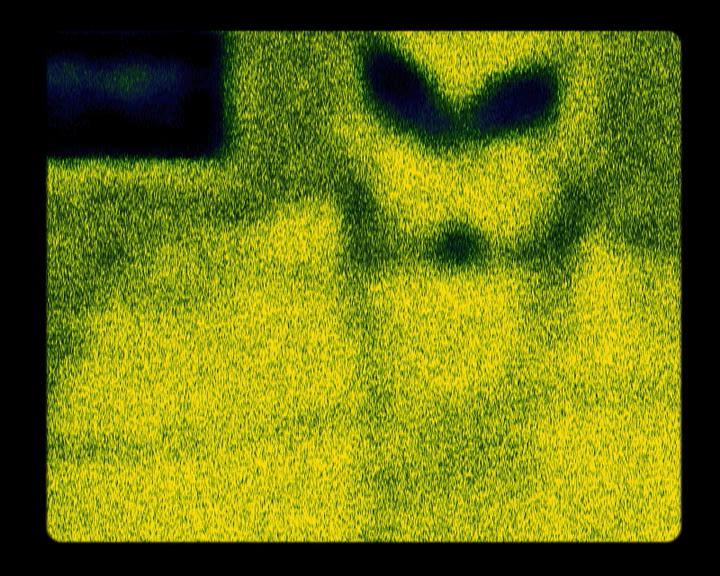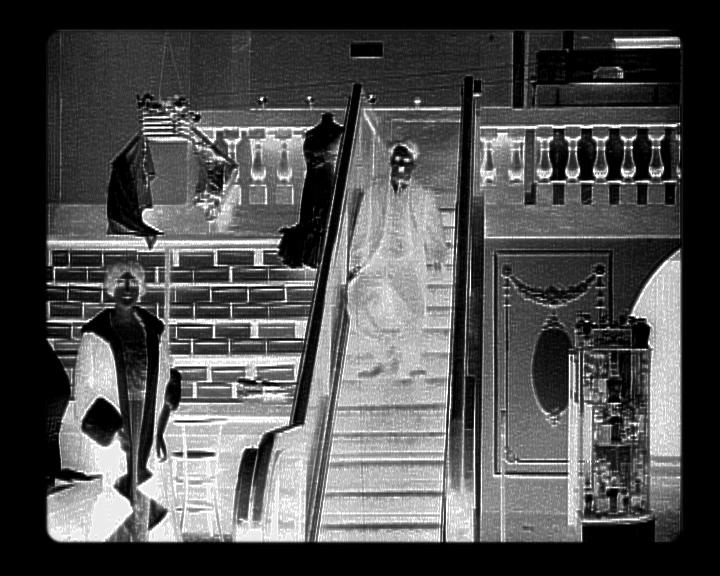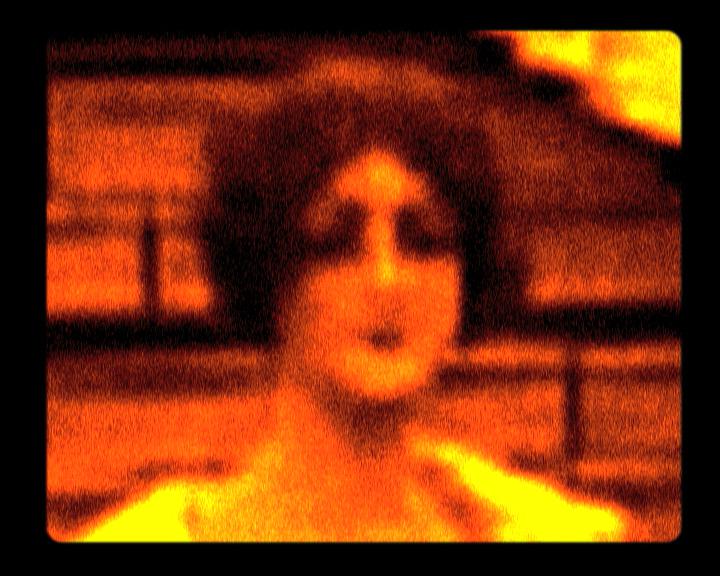INTERMEZZO (Notes on Film 04)
A furious scene, virtuously reassembled, continuously intensifying, yet never moving. A brief excerpt from Charlie Chaplin’s The Floorwalker (1916) serves as starting sequence for INTERMEZZO. Chaplin, fleeing from a monstrous pursuer, down an up escalator, which at the time was the epitome of techno mechanical modernity; on the side, a mannequin as statuary counterpoint. Pfaffenbichler arranges the takes that he has pulled from the original film, enlarged, and in part, set as negatives or alienated in terms of color, according to a special verse scheme: ABABA BCBCB DCDCD, etc., whereby the selected excerpt continually advances to the action and the interlinking of the images becomes increasingly dodgy. At the same time, the accompanying music turns wilder and more impetuous, congenially expressing the frenzied standstill. The specially-composed, guitar-based metal miniature (produced by Sofa Surfers member Wolfgang Frisch) consciously thwarts common silent film accompaniment by means of piano or more contemporary electronics. In return, the elementary movement dynamics: running from, being chased, not moving from the spot, etc., are bestowed with a sound dimension that is that much more powerful. Also furious is the consistently deeper penetration into the course of things, realized by means of blow-up. This goes to the heart, as it were, of filmic optomechanics, which drums pictures as movement and movements as images into our sluggish awareness. The effect of the multiple repetition is just as cathartic as the escalator mechanism’s constant approach toward us over the course of the film is relentless—in the end, all that remains is an abstract frame fibrillation. Captured and yet constantly escaping—could there be a better (or more intense) way to summarize the viewer effect triggered by film?
(Christian Höller)



